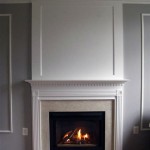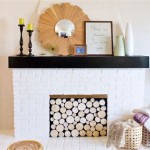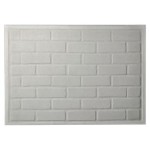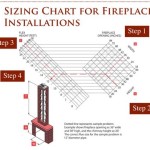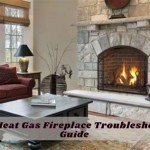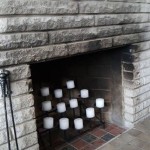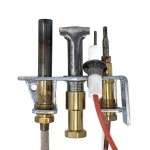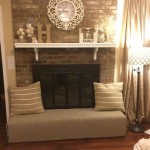Understanding Fireplace Dampers: Functionality, Types, and Maintenance
A fireplace damper is a crucial component of a fireplace system, primarily designed to regulate airflow, improve energy efficiency, and prevent unwanted elements from entering the home when the fireplace is not in use. Understanding the different types of dampers, their functionality, and proper maintenance practices is essential for homeowners with fireplaces to ensure safe and efficient operation.
The Core Function of a Fireplace Damper
The primary function of a fireplace damper is to seal off the chimney flue when the fireplace is not in operation. This sealing action prevents heat from escaping the home during the colder months. Without a properly functioning damper, heated air rises through the chimney via the stack effect, leading to significant energy loss and increased heating costs. Conversely, during warmer months, an open chimney can allow hot air to enter the house, increasing the need for air conditioning. A closed damper mitigates both of these issues. Additionally, a well-sealed damper prevents rain, snow, leaves, and debris from entering the fireplace and potentially causing damage or creating unpleasant odors.
Beyond energy conservation and preventing debris ingress, a damper also plays a vital role in safety. When a fire is lit, the damper must be fully open to allow for proper venting of smoke and combustion byproducts. A closed or partially closed damper can lead to dangerous carbon monoxide buildup inside the home, posing a serious health risk. Therefore, ensuring the damper is fully functional and properly operated is paramount to safe fireplace use.
The efficiency of a fireplace damper also impacts the overall combustion within the firebox. Proper control of airflow allows for a more controlled and efficient burning process, potentially reducing creosote buildup in the chimney. Creosote is a highly flammable byproduct of burning wood and can lead to chimney fires if not properly removed through regular cleaning.
Types of Fireplace Dampers: Throat Dampers, Top-Sealing Dampers, and Chimney Caps
Several types of fireplace dampers are available, each with its own advantages and disadvantages. The most common types are throat dampers, top-sealing dampers, and chimney caps with integrated dampers.
Throat Dampers: Throat dampers are the traditional type of damper, typically located just above the firebox within the throat of the fireplace. They consist of a metal plate that pivots open and closed via a handle or lever located on the front of the fireplace. While relatively inexpensive and simple in design, throat dampers often provide a less-than-perfect seal, allowing for some air leakage even when closed. They are also prone to rust and corrosion due to their proximity to the fire and exposure to combustion byproducts. Furthermore, due to their location, they can be difficult to access for cleaning and repair.
The primary advantage of a throat damper is its low initial cost and ease of installation. In many older homes, a throat damper is already in place, making replacement with a similar model a straightforward process. However, the long-term energy savings and improved sealing capabilities of other damper types often outweigh the initial cost savings of a throat damper.
Top-Sealing Dampers: Top-sealing dampers, also known as chimney top dampers, are installed at the top of the chimney flue. They provide a much tighter seal than throat dampers, significantly reducing airflow when closed. These dampers typically consist of a spring-loaded lid that is operated by a cable that runs down the chimney flue to a handle near the fireplace. When the handle is pulled, the lid closes tightly against a rubber or silicone gasket, creating an airtight seal.
The benefits of a top-sealing damper include improved energy efficiency, better protection against rain, snow, and debris, and a reduced risk of animal entry into the chimney. They also tend to last longer than throat dampers due to their location away from the intense heat of the firebox. However, top-sealing dampers are generally more expensive to purchase and install than throat dampers. Professional installation is often recommended to ensure proper sealing and operation.
Chimney Caps with Integrated Dampers: Some chimney caps incorporate a damper mechanism within the cap itself. These are similar in function to top-sealing dampers, providing a seal at the top of the chimney flue. They offer the added benefit of protecting the chimney from rain, snow, and debris, even when the damper is open. These caps are typically made of stainless steel or copper for durability and resistance to corrosion. Installation usually requires professional expertise to ensure proper fit and sealing.
The choice of damper type depends on various factors, including budget, existing fireplace configuration, and desired level of energy efficiency and protection. Consulting with a qualified fireplace professional can help homeowners determine the best damper type for their specific needs.
Maintaining Your Fireplace Damper: Cleaning, Inspection, and Repair
Regular maintenance of a fireplace damper is essential to ensure its proper function and longevity. This maintenance includes cleaning, inspection, and timely repair of any issues. Failure to maintain the damper can lead to reduced energy efficiency, increased safety risks, and costly repairs in the long run.
Cleaning the Damper: Over time, soot, creosote, and debris can accumulate on the damper, hindering its ability to seal properly. It is recommended to clean the damper at least once a year, preferably before the start of the heating season. For throat dampers, this involves carefully removing any loose debris with a wire brush and vacuum cleaner. More stubborn deposits may require the use of a specialized chimney cleaning brush. Be sure to wear appropriate safety gear, including gloves and a dust mask, when cleaning the damper.
Top-sealing dampers are generally easier to clean, as they are located at the top of the chimney and less exposed to the direct heat and soot of the firebox. However, it is still important to inspect them annually and remove any debris that may have accumulated. The sealing gasket should also be cleaned to ensure a tight seal.
Inspecting the Damper: Regular inspection of the damper is crucial for identifying any signs of damage or wear. For throat dampers, check for rust, corrosion, and warping of the metal plate. Ensure that the handle or lever operates smoothly and that the damper opens and closes fully. For top-sealing dampers, inspect the cable for fraying or damage, and check the sealing gasket for cracks or deterioration. Look for signs of water damage or leaks around the damper.
During the inspection, also assess the condition of the surrounding brickwork or masonry. Cracks or gaps in the masonry can allow for air leakage, even with a properly functioning damper. These issues should be addressed promptly to prevent further damage and improve energy efficiency.
Repairing or Replacing the Damper: If the damper is damaged or not functioning properly, it should be repaired or replaced as soon as possible. Minor repairs, such as tightening loose screws or lubricating the damper mechanism, can often be done by the homeowner. However, more significant repairs, such as replacing a rusted-out damper plate or repairing a damaged cable on a top-sealing damper, may require professional assistance.
When replacing a damper, it is important to choose a replacement that is compatible with the existing fireplace and chimney. Consulting with a qualified fireplace professional can help ensure that the replacement damper is properly sized and installed. In some cases, it may be more cost-effective to replace the entire fireplace system if the damper is severely damaged or if other components are also in need of repair.
Ignoring damper issues can lead to a range of problems, including increased energy bills, drafty conditions, and even safety hazards. By implementing a regular maintenance schedule and addressing any issues promptly, homeowners can ensure that their fireplace damper continues to function safely and efficiently for years to come.
Furthermore, considering the installation of a carbon monoxide detector is a crucial safety measure, regardless of the type of fireplace damper in use. A carbon monoxide detector provides an early warning of any dangerous buildup of this odorless and colorless gas, allowing occupants to evacuate the premises safely.
In summary, the fireplace damper is an integral part of a fireplace system, contributing significantly to energy efficiency, safety, and overall home comfort. By understanding the different types of dampers, their functions, and proper maintenance practices, homeowners can make informed decisions about their fireplace and ensure its safe and efficient operation.

How To Open A Chimney Damper Traditional Fireplace Pros

How Do Fireplace Dampers Work Zoro Com

What Is A Chimney Damper Full Service

Is My Fireplace Damper Open Or Closed Vertical Chimney Care

Types Of Diffe Chimney Dampers Severna Park Pasadena Md

Fireplace Flue Dampers Ensure Optimal On

How To Use A Fireplace Damper The Right Way

When To Close My Fireplace Damper We Love Fire

What S The Purpose Of A Chimney Damper Where Is It Located

Why It S Important To Close Your Damper In The Summer

